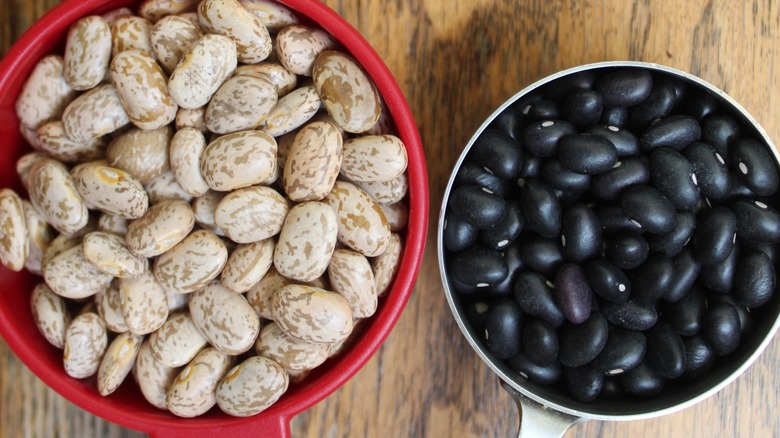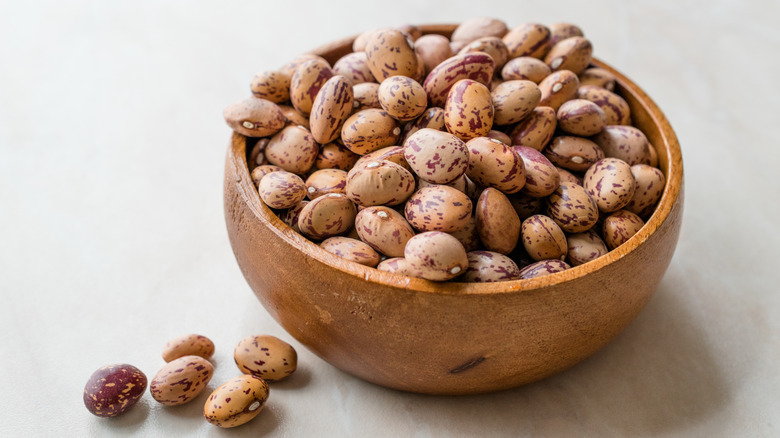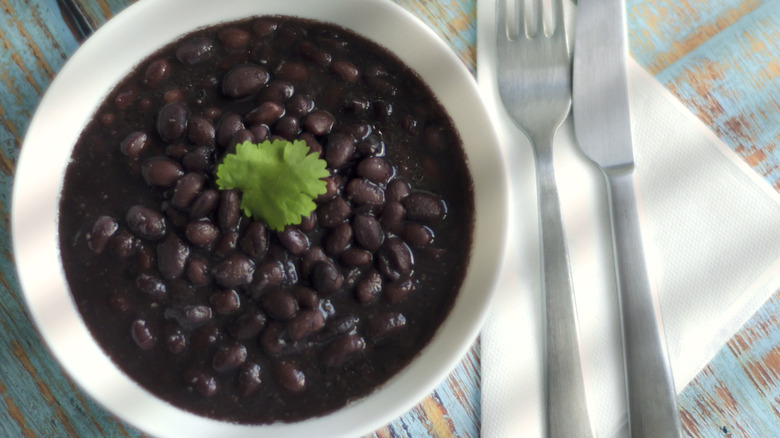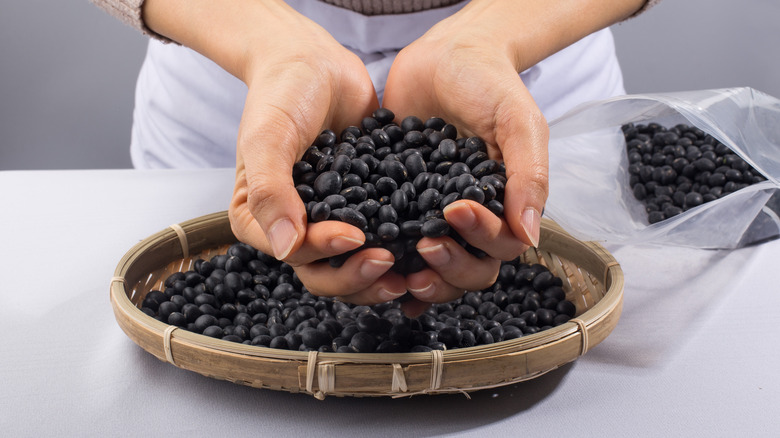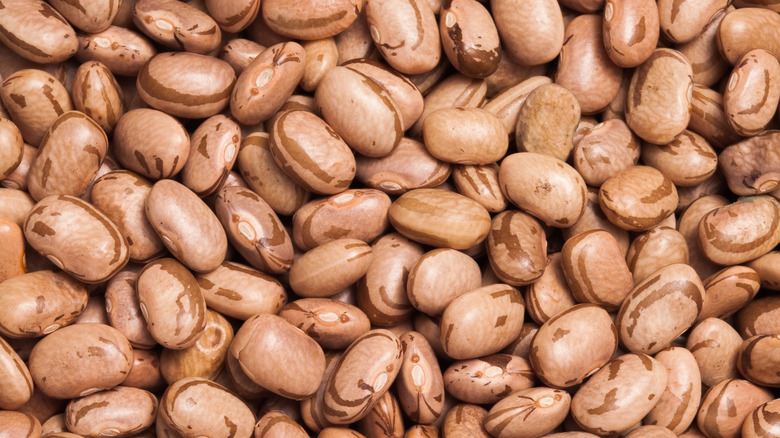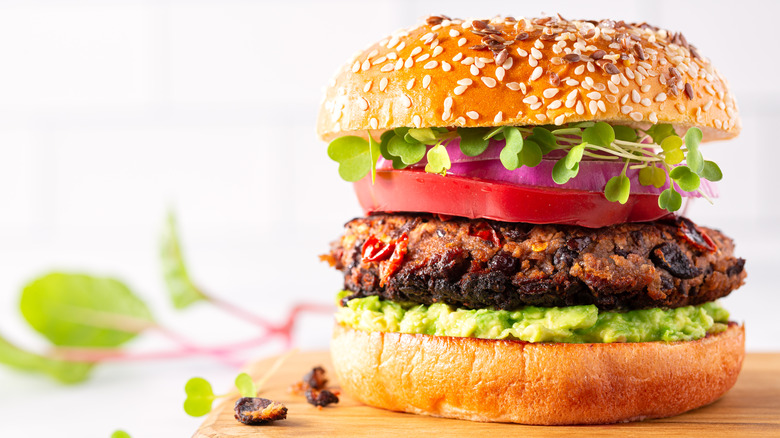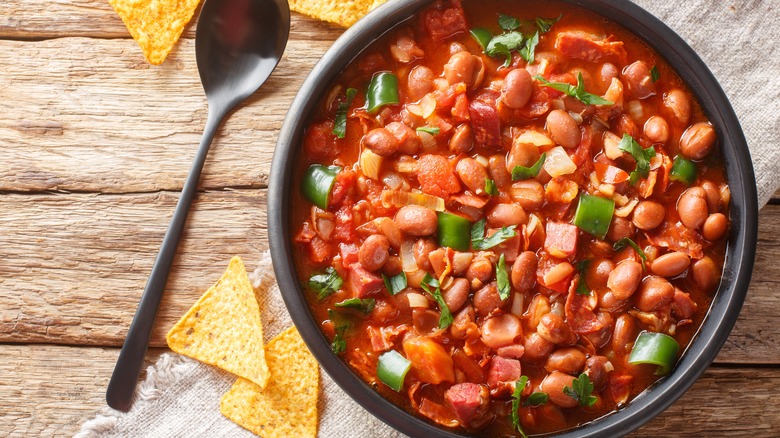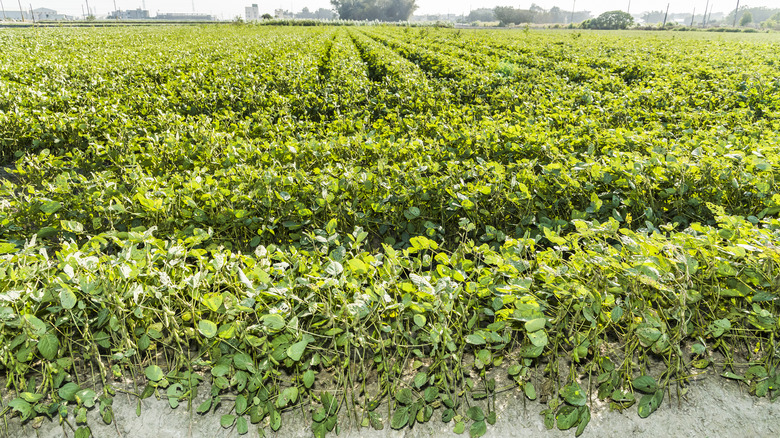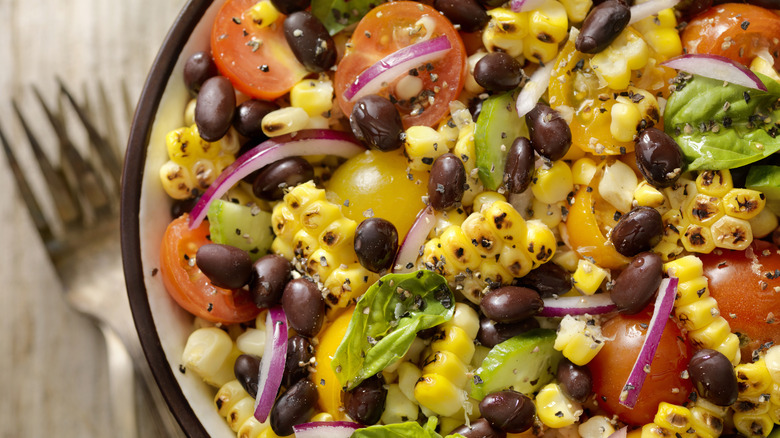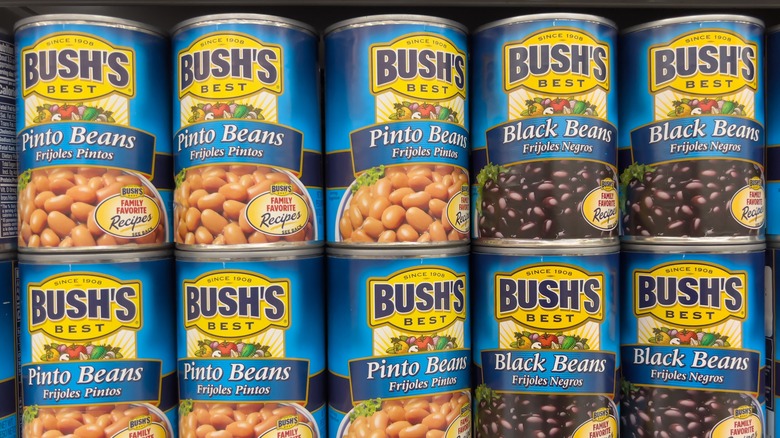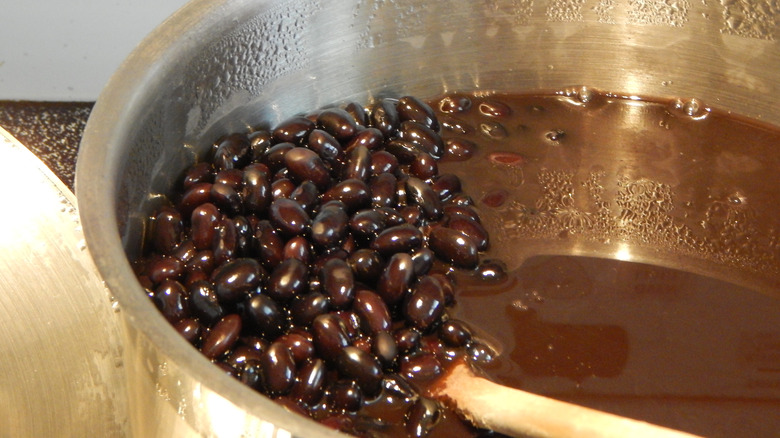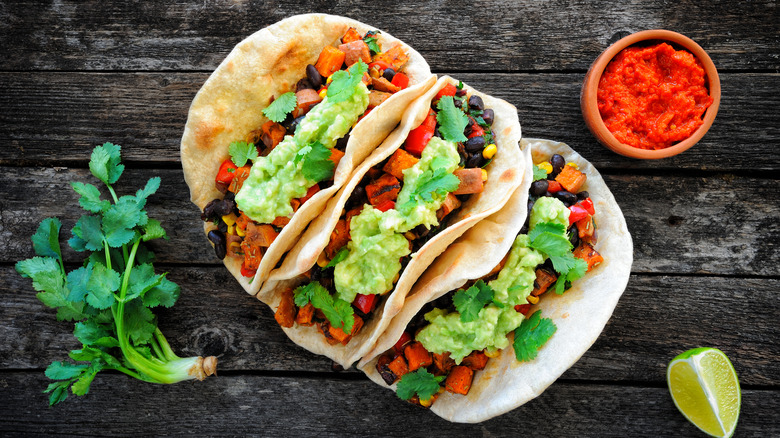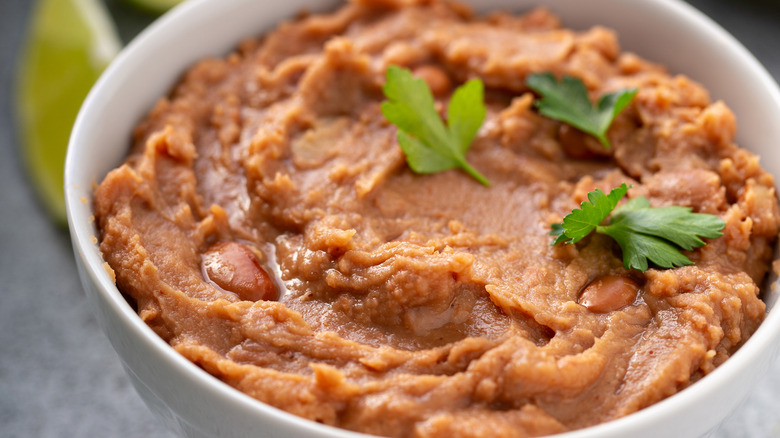Black Beans Vs Pinto Beans: A Complete Guide
Beans are one of the most versatile pantry staples — they're incredibly nutritious, easy to store and prep, and fit into a huge array of recipes. Among the vast range of beans available in stores, black beans and pinto beans are two of the most popular, and each brings its own qualities to the table.
You might be using these two types of beans interchangeably, assuming their qualities are similar enough for them to serve the same purposes in your cooking. But, these beans actually have distinct characteristics that make them suitable for different culinary applications, and understanding these will help you elevate your dishes.
Black beans and pinto beans not only have differences in their appearance, but also in their flavor and texture. While pinto beans are commonly used in chilis and stews, black beans are a favorite in tacos, rice dishes, and even burgers. In this guide, we'll explain the reasoning behind the different uses, exploring the origins, nutritional benefits, and cooking methods for these delicious legumes. So, next time you're reaching for a can of beans from the pantry, you'll know exactly which one to select.
Pinto beans change color after cooking
If you've used both canned and dried pinto beans in your kitchen, you'll have noticed a distinct difference in their appearance. When dry, pinto beans are easily recognized by their beige skin, which features reddish-brown speckles. These patterns give the beans their name, as "pinto" translates to "painted" in Spanish. However, this colorful appearance transforms once the beans are cooked.
During the cooking process, the speckled appearance of pinto beans fades away, leaving behind a solid, light brown or pinkish hue. This transformation is a normal part of cooking and does not affect the flavor or texture of the beans. On the other hand, black beans maintain a uniform coloring when cooked, though their original deep black hue tends to change into a slightly paler purplish brown.
To prepare dried pinto beans, first give them a good rinse, then transfer them to a large bowl of water to soak overnight. Once the soaking is complete, drain away the water and give the beans another rinse. Next, add them to a large pot with some salt and enough water to cover them. Bring the water to a boil, then reduce to a low simmer and cover the pot. The beans should take 60 to 90 minutes to cook. You can check whether the beans are ready by gently pressing them against the side of the pot with a fork. They should mash easily, without being overly mushy.
Black beans have a richer, earthier flavor
Beans are often a key component of vegan and vegetarian-friendly meals, due to their high protein content and hearty texture. Black beans are a particularly popular choice for such dishes, due to their rich taste, which can be described as earthy, slightly sweet, and even somewhat meaty or mushroom-like. Pinto beans tend to have a milder, creamier taste than black beans, with subtle notes of nuttiness.
The distinctive taste of black beans means they can bring a unique depth of flavor to your cooking, adding a savory richness that other types of beans can't quite deliver. The robust flavor profile of black beans makes them fit in well alongside bold seasonings and spices, making them an ideal ingredient for dishes that require a hearty base. Whether used in a warming black bean soup or a spicy taco filling, these beans bring more than just texture, enhancing the overall taste of the dish too.
While pinto beans also make a delicious addition to a range of recipes, their milder flavor is more likely to be overshadowed by other ingredients. Despite this, they're fantastic at soaking up flavors in soups and stews, and adding a hearty texture without affecting the overall taste of the dish too dramatically.
They're both high in fiber
If you're looking to boost your fiber intake, both varieties of beans will give you a significant dose of the good stuff. Fiber is an essential component of a healthy diet, promoting digestive health, stabilizing blood sugar levels, and lowering your risk of developing heart disease. Adding black beans and pinto beans to your meals is a delicious and satisfying way to get your fiber.
A single cup of cooked black beans contains 15 grams of fiber, while the same serving of pinto beans provides just a marginally greater amount. This is approximately half of the recommended daily intake, so both serve as an excellent choice for those aiming to meet their fiber target.
The high fiber content of these beans also contributes to a feeling of fullness, so you'll stay sufficiently fueled until your next meal. Because beans are low in fat and high in protein, they're a fantastic, nutrient-dense option for anyone following vegetarian or vegan diets, while being versatile enough to be included in everything from salads and soups to burrito bowls and sheet pan bakes.
Pinto beans are larger in size
When it comes to size, pinto beans tend to be larger than black beans, so this is important to consider when selecting the right bean for your dish. Pinto beans are oval-shaped and typically measure about half an inch in length when cooked, whereas black beans are roughly pea-sized.
The larger size of pinto beans can add a unique textural element to dishes, whether that's a hearty chili or a creamy bean dip. If you're making a soup or stew with lots of chunky vegetables or bigger pieces of meat, adding larger pinto beans is ideal, since they won't get lost amongst the other ingredients. They're sure to provide plenty of visual appeal and give your dish a hearty, rustic feel.
On the other hand, the smaller size of black beans makes them well-suited to recipes with more finely chopped ingredients, such as salads or rice dishes. They're a fantastic addition to a taco filling, delivering evenly-distributed pockets of texture and flavor throughout the mixture, so that every bite is packed with the goodness of beans.
Black beans have a firmer texture
Black beans are known for their firm texture, which sets them apart from many other types of beans, including pinto. This firmness is one of the reasons they are favored in dishes where maintaining the integrity of the bean is key. The dense structure and thicker skin of black beans means that they hold their shape well as they cook at high temperatures, even when simmered for extended periods. Therefore, they shine in slow-cooked soups and chilis, or any dish where a firmer texture is desired, such as salads, salsas, or black bean burgers. Wherever you use them, these beans are sure to provide a satisfying bite and a hearty texture.
Pinto beans are much softer in consistency, with a thinner skin and creamier texture. They break down more significantly during cooking, and will become mushier than black beans after a long stint simmering in a pot of soup. However, this creamy texture is ideal when you want the beans to blend seamlessly with other ingredients in the dish, making the overall mouthfeel that much heartier. The softness of pinto beans also makes them easier to blend to achieve a smooth texture if you're making refried beans or bean dip.
Pinto beans are great for soaking up flavors
With their large size, subtle taste, and creamy texture, pinto beans are a popular choice in dishes where they can soak up the savory goodness of the ingredients they're cooked with. These beans make an excellent base when paired with the rich flavors of herbs, spices, and aromatics.
The mild flavor profile of pinto beans complements herbs like cilantro, oregano, and parsley wonderfully. They're also commonly cooked with aromatics such as onions, garlic, and peppers, which allows the beans to take on a whole new depth of flavor. For traditional refried beans, pinto beans are mashed and simmered with garlic and onion, creating a savory side dish that's amazing served with tacos and enchiladas.
Both black beans and pinto beans taste delicious when enhanced with spices like cumin, chili powder, or paprika. Using these seasonings is the perfect way to add a little warming heat to the beans and build a flavor-packed, Mexican-inspired dish. Due to their rich taste, black beans make a great accompaniment to punchier flavors, such as fiery ginger or herbaceous thyme. Black beans pair particularly well with epazote — a pungent herb often used in Mexican cuisine, which also happens to have gas-relieving properties.
Both beans originated in the Americas
Black beans are native to South and Central America, where they were first cultivated over 7,000 years ago and still remain a prevalent crop today. As trade routes expanded and European explorers arrived in the Americas, black beans spread to other parts of the world, and they are now a key ingredient in many global cuisines. Brazil is the world's largest producer of black beans, growing over 400,000 tonnes of these legumes every year (via The Western Producer). Therefore, it's unsurprising this country also consumes the greatest amount of these beans too. In fact, the national dish of Brazil — feijoada — is a stew consisting of black beans, meat, onions, and seasonings.
Pinto beans were also first grown in the Americas, and their origins can be traced more specifically to Mexico and Peru. Today, pintos are the predominant bean crop in the United States, with more than a third of all beans produced in the country being of this variety (via Crop Science Society of America). Like black beans, pinto beans are also a staple in Brazilian cuisine, as well as in Spanish and Mexican dishes. In the Southwestern U.S., ranch-style pinto beans is a popular dish, featuring beans simmered with herbs, spices, chiles, onion, and garlic.
They have a similar nutritional profile
There's no doubt that beans are a healthy choice, bringing plenty of nutrients to your plate. Both black beans and pinto beans are packed with a range of beneficial vitamins and minerals, as well as being high in fiber and protein.
When it comes to protein content, they are almost equal, with both pinto and black beans containing about 15 grams per cup (cooked), and it's a similar case for many of the other nutrients they contain. These two varieties contain similar amounts of iron, as well as of the essential minerals phosphorus, copper, manganese.
Both black and pinto beans are also a great source of potassium, which is crucial for the function of nerves and muscles, as well as zinc, which is important for our immune system and metabolic processes. One slightly more notable difference between these beans is their magnesium content. Here, black beans come out on top with 120 mg per cooked cup, compared to the 85.5 mg found in a cup of pinto beans. But when it comes to calcium, pinto beans contain the most, boasting 78.7 mg per cup versus 46.6 mg for a cup of black beans.
Both varieties can be bought canned or dried
Whether you prefer cooking dried beans from scratch or opting for the convenience of canned versions, both black and pinto beans are available in a format that best suits your needs. Each option offers its own set of pros and cons, so it all comes down to what you prioritize in your kitchen.
Canned beans are a natural choice if you're looking to streamline your home cooking, since they're pre-cooked and ready to use. This makes them great for quick weeknight meals and recipes that require minimal prep. Add them directly to stews, salads, or Mexican-inspired dishes like quesadillas or fajitas. They offer an amazing way to boost the nutritional content of any dish, with no need for extensive cooking. However, canned beans can be high in sodium, so it's advisable to rinse them thoroughly under cold water before using.
Dried beans, on the other hand, offer more flexibility in terms of flavor and texture customization. They often require soaking and need to be cooked, which can take several hours combined. However, this process allows you to infuse the beans with any seasonings of choice, while also controlling their softness. Dried beans are usually more economical than canned options too, making them a cost-effective choice if cooking with beans is a regular occurrence in your home.
Dried black beans don't require soaking before cooking
To soak or not to soak? It's a question that might be met with a different answer depending on who you ask. But, the general rule of thumb is that larger beans, like pinto beans, will benefit from soaking, whereas it is less necessary for smaller beans with thinner skins. Since black beans sit on the smaller end of the scale, this means soaking isn't a requirement.
In Serious Eats' comparison of soaked and un-soaked black beans, the latter was deemed more flavorful, and took just an hour and a half to cook to perfection. When you soak beans, some of their flavor leaches out into the water, which is then lost once they're drained prior to cooking. So, by skipping the soaking you're retaining all of the delicious flavor of the beans.
The larger size of pinto beans means they will take longer to soften up during cooking, so soaking them first will help to reduce the overall cooking time. This is generally a simple case of placing them in a bowl of water and letting them sit on the countertop overnight. Once soaked, the pinto beans should take about 60 to 90 minutes to cook.
Black beans are great for tacos and rice dishes
We've touched on the versatility of black beans, and some of the delicious ways to use them. So let's delve into the specifics, and how to prepare some of the wonderful meals they can elevate with their earthy flavor and firm texture.
Firstly, black beans are a frequent feature in taco recipes, with their compact size and chewiness enhancing every bite of the tortilla. They pair well with tacos made with beef, chicken, or shrimp, or even entirely plant-based feasts. To make an epic taco filling, try frying up some diced onion and ground beef, before adding your favorite taco spices, such as chili powder, cumin, and paprika. Then, add a drained and rinsed can of black beans into the mix, stirring to heat everything through. Use this hearty mixture to fill your tortillas, topping with some chunky guacamole, salsa, or a dollop of sour cream.
Black beans and rice is another popular dish, which makes a great accompaniment to grilled meats like chicken or pork. To make this nutritious medley, first saute onion and garlic. Once softened, add uncooked rice and a dash of cumin and mix well. Then, it's time to add those tasty black beans, along with some chicken broth, before covering the pot and leaving everything to simmer until the rice is tender. Black beans are also wonderful for topping nachos, tossing into grain bowls, and even baking into sweet treats like chocolate brownies and muffins.
Pinto beans are great for chilis and refried beans
Although pinto beans can absolutely be used in many of the same ways as black beans, they'll shine in dishes that celebrate their softer texture. Pinto beans are one of the most popular types of beans to use in a chili, bringing their rich, creamy consistency for a hearty result. To make a simple, flavor-packed chili, first brown some ground beef. Next, add the onion and garlic and cook until softened. Now you can add the remaining ingredients — canned tomatoes, chili powder, cumin, oregano, and canned or pre-cooked pinto beans. Once combined, leave the chili to simmer for at least 15 minutes.
Pinto beans are also the classic choice for making refried beans, a staple side dish in Mexican cuisine. The first step in creating this creamy spread is to saute onion, garlic, chili powder, and cumin. Then, add cooked, drained pinto beans with a little water, cover the pot, and leave it to simmer for 5 minutes. Next, mash the beans until broken down and creamy, before cooking for a final few minutes. A squeeze of lime juice and a sprinkling of cilantro to garnish is a great idea, too. If you prefer your refried beans super smooth, you can blitz the mixture in a blender to remove any lumps.
These beans will also work wonderfully in casseroles, dips, and salads. Ultimately, there's heaps of room for creativity, so feel free to use your pinto beans as you see fit.
